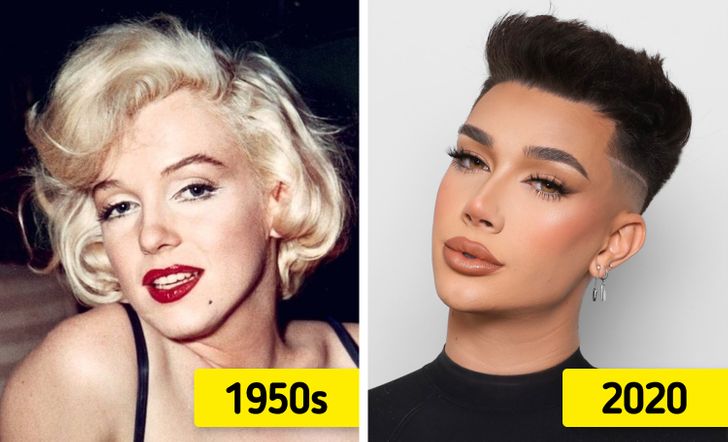History has significantly influenced the chronological evolution of beauty standards in America. The societal perceptions of beauty in the 21st century are far beyond what was considered beautiful in the 1900s. The 1900s began towards the end of the Victorian England era. Queen Victoria was an influential figure on what was considered beauty at the time. This era portrayed the perception that beautiful women needed to be full-figured and desirably plump. Women wore tight corsets to achieve a cinched-wait which was vital in bringing out the hourglass figure.
The 1920s ushered in the era of the ”Roaring Twenties.” Women at this time needed to have a flat chest, boyish figure, and a short bob hairstyle. They also contended the notion that long hair was a beauty standard. The need for a cinched waist was not relevant since their clothing did not emphasize the curves.
As this era faded, the Golden age of Hollywood began in the 1930s to the 1950s. This period drew reference from most of the standards that existed in the Victorian England era. It displaced the beauty standards underpinned on boyish trends and embraced back curves, a slim waist, hourglass figure, and large breasts. The existence of these beauty trends during this era were perpetuated by the fame of Marilyn Monroe, who was considered desirable and exhibited these traits.
In the 1960s, the swinging sixties era embraced long and slim legs, thinness, willowy, and adolescent physique as esteemed beauty standards. It was in the 1980s that the revered supermodel era existed. This era marked a positive appeal towards tall and athletic women with a svelte but curvy figure. It also embraced women with toned arms. There was a significant influence for women to work out to achieve the ideal fitness levels and a thin body. The pressure to fit in also saw a dramatic spike in the health cases of anorexia. Women were starving and avoiding food at extreme levels to remain thin. A change of era did not resolve the issue as the 1990s brought about a more intense pressure for women to stay extremely thin. The heroin chic era glorified women that appeared frail and thin. Therefore, women worked towards achieving an androgynous and waifish body. Those with translucent skin and extremely thin bodies were the ideal mark of beauty.
We exist in the postmodern beauty era. Since the 2000s, society has demonstrated a preference for women with a flat stomach, larger breasts and butt, healthy-looking skin, and a thigh gap. The Kardashians, notably Kim Kardashian, have become the primary influence on ideal beauty standards for modern woman. The pressure for women to have a particular appeal to be considered beautiful is ongoing. This pressure, especially in this era, has caused women to pursue plastic surgeries to achieve these standards.

https://brightside.me/inspiration-girls-stuff/why-beauty-standards-are-the-way-they-are-today-798752/
https://edition.cnn.com/2018/03/07/health/body-image-history-of-beauty-explainer-intl/index.html
https://www.scienceofpeople.com/beauty-standards/